The Ups and Downs of Area AB
Those of you who have worked, or are working on the Area A excavations may possibly have wondered what happens at the western edge of the site, and why there is a big, overgrown hole there. This is Area AB, excavated by Moshe Dothan, and more specifically, supervised by me for three seasons in the early 1980’s.
Although now looking wayward and woebegone, this excavation was the site of some of the most spectacular discoveries on the tell, and much of our thinking about the earlier periods of the tel’s life has been gleaned from this area. Within its bowels was revealed a complex of Middle Bronze Age ramparts and defensive mud-brick walls which were plaster-lined and stood to 5m high. There was a step system extending down its face, and then there was a Middle Bronze Age fortress set into the rampart.
Moshe had excavated the big cut through the tel some years previously, revealing the complex arrangements of glacis, that is the steep sloped brick and sand structure which was intended to make ascent by attackers very difficult, and this was set against the wall. With all the magnificence on view, I thought we had revealed all the mysteries of this structure, but I was wrong, because as we excavated down the side, we discovered a couple of steps and then a brick parapet beside it. I was incredibly excited about it, recognising its considerable importance and assumed that Moshe would be too, but he was off the tel and didn’t arrive back for some hours later. When he did appear above me, he was showing some visitors around, and when I called out, showing what had been discovered, he just made some dismissive comment and wandered off taking his visitors with him. I felt deflated and angry that he should have had so little regard for what I thought was an incredible find, and I continued digging with more aggression than enthusiasm. Half an hour later, Moshe appeared beside me. He was excited, talking nineteen to the dozen and saying, “Jamie this is fantastic! It is yes!” He then revealed to me that the reason for his dismissive comment was that he hadn’t wanted to reveal the discovery to the archaeological community too soon, and he had been desperate to get rid of his guests so he could come back to join me. From, then on he was like a child in a sweet shop, you couldn’t get him out of the trench. He didn’t stop for lunch, and continued digging all afternoon. By the end of the day we were all exhausted and excited, and we had much of the step system revealed. I discovered a lot about Moshe that day!
One of his other obsessions was the discovery of a burial behind the mud brick wall, and what proved to become my most embarrassing find. Initially all that was discovered was the eye socket of a skull, and I consulted with one of our volunteers, who was a doctor. I asked her, on the basis of the limited amount revealed, if it was human; she declared, “yes”, and I announced to rest of the tel that we had discovered a human burial. However, on continued excavation it proved to be anything but human, in fact, it was a donkey! Was I embarrassed or what? It later became euphemistically known as ‘the horse’, or in my case: ‘that bloody horse’.
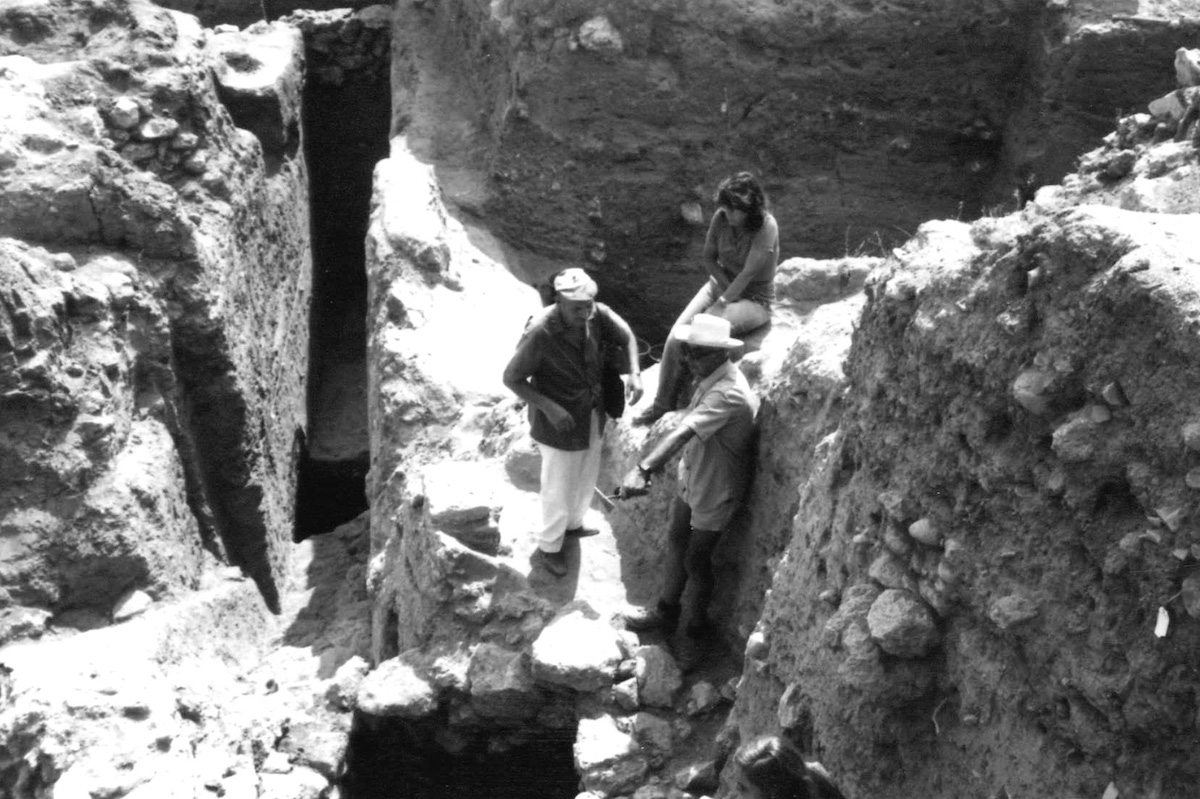
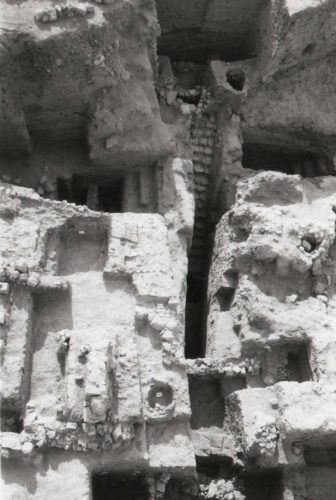
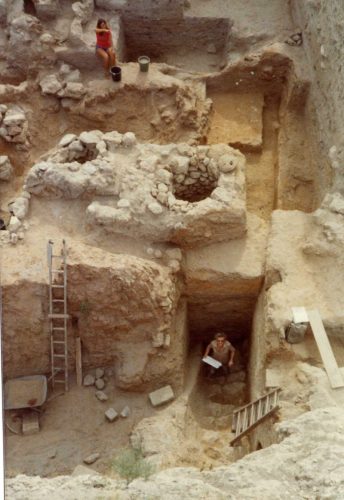
Moshe was so excited about the discovery of a deliberately buried donkey, he insisted that we should take the ‘horse’ out in situ, and instructed our conservator Pinhas to deal with it. I suppose I should have become suspicious when Pinhas took bag after bag after bag of Plaster of Paris down the trench to do his conservation. He then proudly announced it was finished, and there it was – a horse mounted on a half ton block of Plaster of Paris! I asked him how we were going to get it out, to which he replied sardonically, “that’s your problem”. Oh boy, was he right!
We initially tried using a pulley with a rope pulled by a car. The pulley promptly broke catastrophically, but the horse hadn’t moved one inch. Then we made up a bigger and stronger pulley with steel tube and repeated the attempt. That super-strong pulley also failed. We attempted another pull with an uber-strong pulley with similar results. It looked as though I had that ‘bloody horse’ in the trench for life.
In the end, we excavated a step in half the trench, then pushed the horse down into the lower part. After that, we dug the other half of the trench out, moving the horse once again into the other side that was now lowered by six inches. By repeating this operation over and over, we just about managed to dig the trench. All the time, the horse was moving further and further down and my problems and mood were deteriorating. After three weeks of this, my mood finally flipped into anger, and I stormed up to Moshe. “Get that bloody horse out of my trench or else!’ I shouted. (I had absolutely no idea of what the ‘or else’ could refer to – the ultimate idle threat). At which point, he rang up a civil engineering company in Akko, and asked for them to send up a crane. Half an hour later it appeared. It dipped its arm over the trench edge, and ten minutes later the ‘bloody horse’ was up on top and the crane was trundling back down the tell. To which Moshe said to me, ‘Oooh Jamie, you vorry too much!!’ I replied, ‘If it was that easy why couldn’t you have done that four weeks ago?’ I, of course, knew the answer to that one already!
The ultimate irony of the whole story was that we were visited by a journalist from The Jerusalem Post, and he insisted that I be photographed in front of my horse. So my photograph ended up on the front of the Jerusalem Post, immortalised forever in association with my least favourite artefact.
Area AB has many associations for me, but the glory of its Middle Bronze Age character and remains will always act as a reminder of how remarkable Tel Akko is, and remember, all that wonder is still to be discovered in the adjacent Area A.
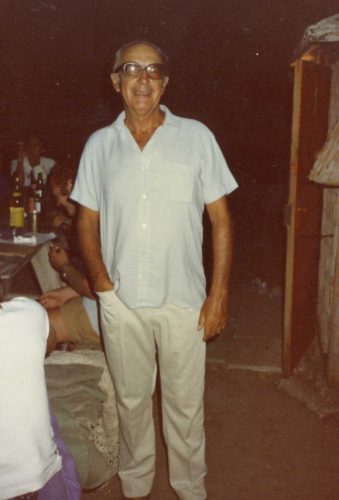
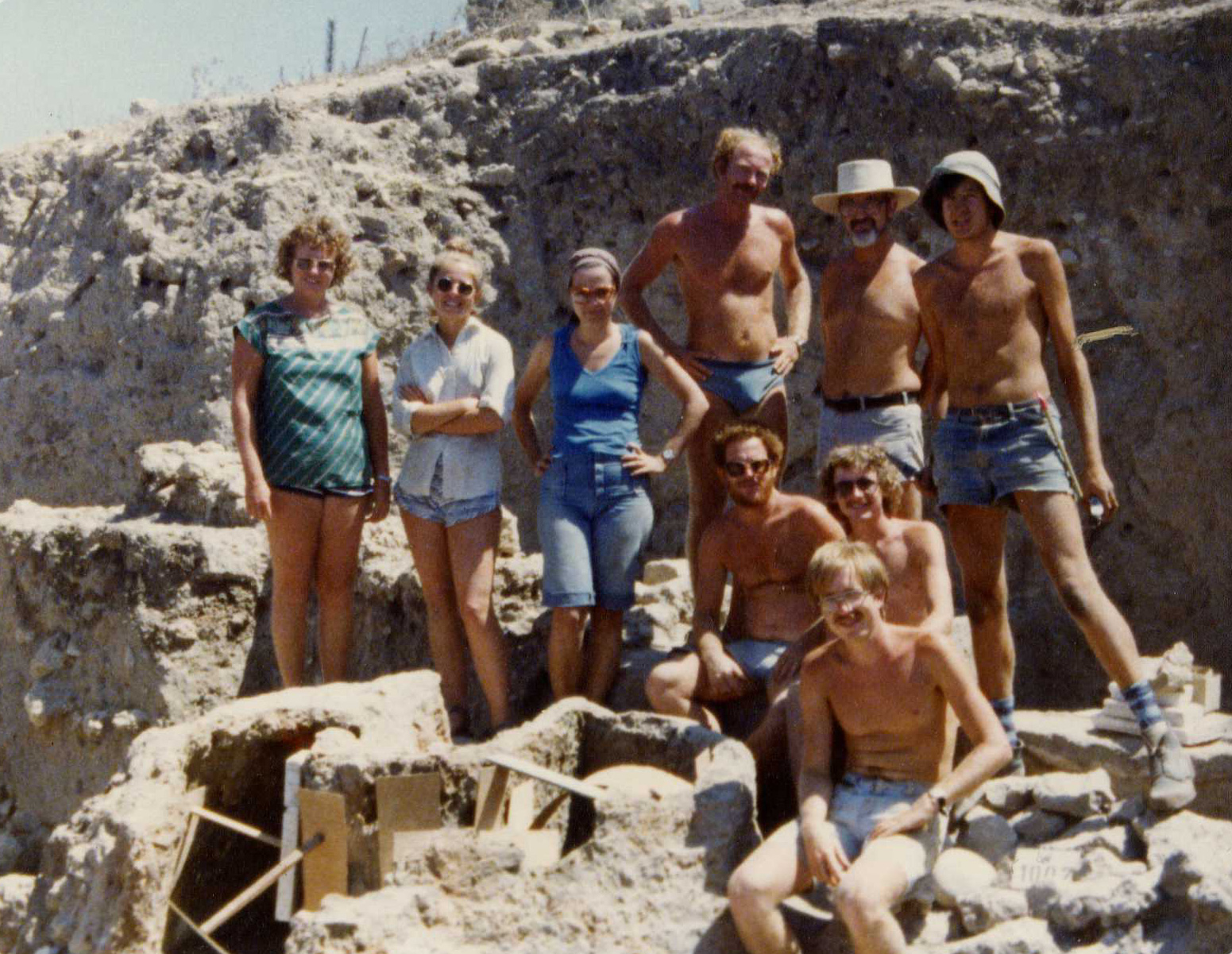
No Comments